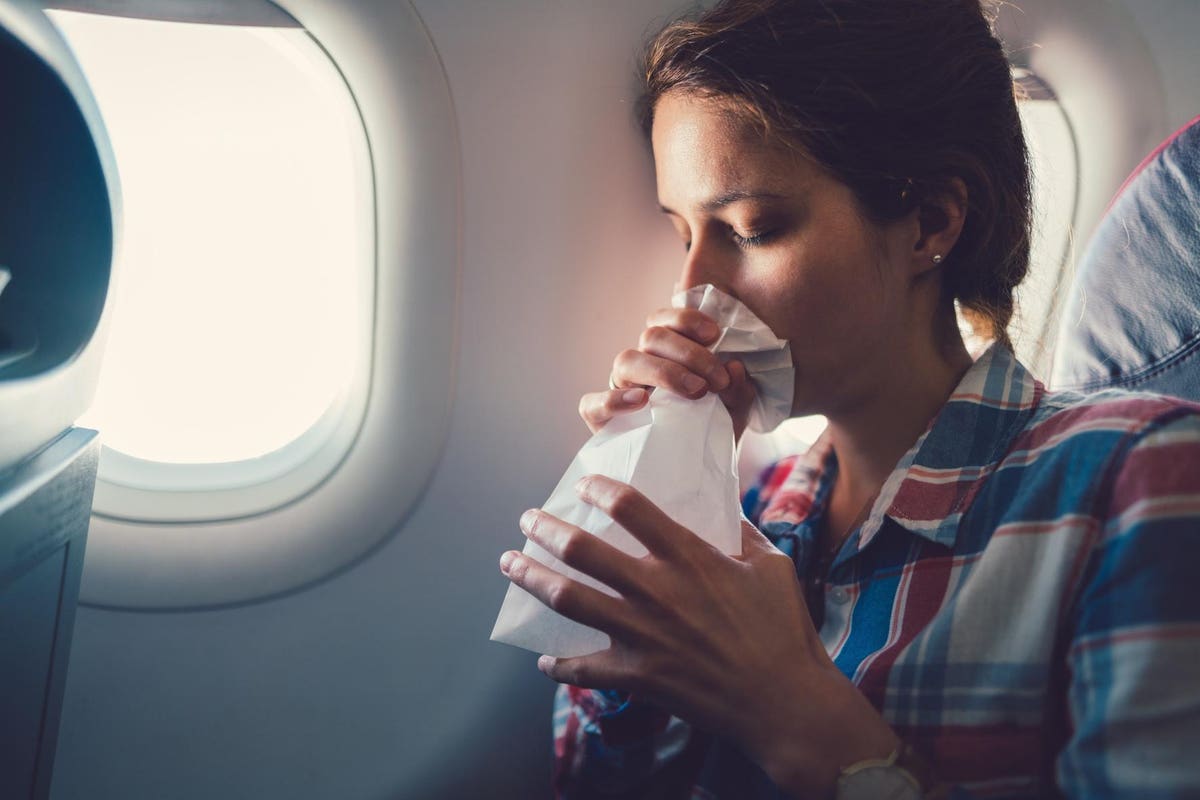Ladies and gentlemen, we are about to experience more turbulence like, maybe, forever? Fasten your seat belts and get ready for yet another potential impact of climate change: bumpier airplane rides. It’s a clear problem—an increase in airplanes experiencing clear air turbulence over the past four decades. That’s based on a study recently published in the scientific journal Geophysical Research Letters that analyzed climate data from 1979 through 2020.
The study, conducted by a team from the University of Reading in the U.K. (Mark C Prosser, Paul D Williams, Graeme J Marlton and R. Giles Harrison), found significant increases in the total duration of clear air turbulence experienced by flights at an average point over the North Atlantic. Light-or-greater clear air turbulence over the course of a year jumped from 466.5 hours in 1979 to 546.8 hours in 2020, a 17% increase. The increase in moderate-or greater clear air turbulence was even greater, going from 70.0 hours to 96.1 hours for a 37% increase. That was topped by the increase in severe-or-greater clear air turbulence, a 55% increase from 17.7 hours to 27.4 hours during that time period. The research team found similar over the continental U.S. as well. They did find significant increases, albeit lesser increases, over Europe, the Middle East, and the South Atlantic too.
Studies published in the scientific journals Nature and Advances in Atmospheric Sciences have detailed how warmer air from climate change has increased the “tug of war” between the jet streams in the upper- level of the atmosphere and the lower portion of the atmosphere. This, in turn, has increased the amount of clear air turbulence. It’s called clear air because you can’t readily see it. Pilot Stuart Walker describes the four different types of turbulence in the following video from The Wall Street Journal:
As Walker explained, clear air turbulence can be tougher to avoid because like a fart in the air, it’s harder to evade what you can’t see. Therefore, the increase in clear air turbulence over time has probably on average resulted in bumpier and bumpier rides over the past four decades.
That obviously is not great news. Few people will say, “Gee, it would have been better if that ride had been bumpier,” assuming that they are talking about an airplane flight and not something else. The authors cited a 2003 estimate that turbulence was costing the aviation industry around $200 million each year back then. That number has probably increased substantially since then because of, you know, that whole inflation thing. This figure was not super surprising since turbulence can cause wear and tear and damage to airplanes.
There’s also the effects that turbulence can have on airplane passengers and crew members. This can range from minor problems such as temporary headaches, nausea, and toupées flying off to more severe injuries that require medical care and even hospitalization. Data on the Federal Aviation Administration (FAA) website shows that 34 passengers and 116 crew members suffered serious injuries due to turbulence from 2009 through 2022. The National Transportation Safety Board (NTSB) defines a serious injury as “any injury that (1) requires the individual to be hospitalized for more than 48 hours, commencing within seven days from the date the injury was received; (2) results in a fracture of any bone (except simple fractures of fingers, toes, or nose); (3) causes severe hemorrhages, nerve, muscle, or tendon damage; (4) involves any internal organ; or (5) involves second-or third-degree burns, or any burns affecting more than five percent of the body surface.”
Of course, the best way to avoid problems with turbulence is to avoid turbulence in the first place. Improved flight and weather monitoring and detection technology may be able to help pilots navigate away from areas of turbulence. But it’s not as if an airplane can just go anywhere it wants like Kanye West on a stage. With other aircraft in the sky, there’s only so much an airplane can change it’s flight patterns.
What can you do to prevent problems from turbulence, assuming that you aren’t flying the plane yourself? Keeping your seatbelt fastened at all times when you are in your seat can certainly help. Listening to announcement from pilots and flight attendants can help too. When they do announce upcoming turbulence, it’s probably not a great idea to plan for a 30-minute bathroom break. Aside from having ridiculous faucets, airplane bathrooms don’t tend to have toilet seats with seatbelts. So it can be a bit dangerous to be in them when the plane is a rocking. Times of turbulence are also not great times to be searching for your Justin Bieber doll in the luggage in your overhead compartment. Instead, try folding the paper napkin that you are given with the peanuts and call it Baby.
Yep, we are clearly in more turbulent times these days. And with political and business leaders not doing nearly enough to address pollution and how it may be contributing to climate change, expect the ride to get rougher.
Read the full article here





